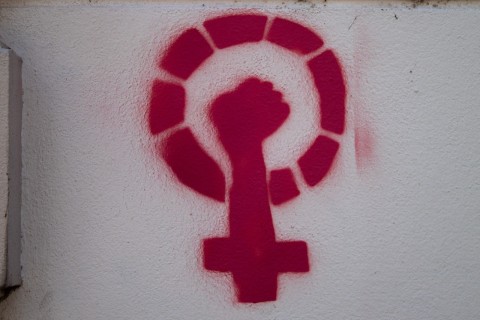
Today is International Women’s Day.
While we join in celebrating the progress women have achieved across the span of history, we also can’t forget that obstacles still impede the economic status of women.
To mark this day, Canadians for Tax Fairness asks you to consider 3 things about how tax cuts contribute to inequity and hold women back from getting a fair deal:
1. Tax cuts aren’t created equal
It’s not news that there’s a gap between what women earn and what men earn.
Women earn only 36% - 37% of all income in Canada and we all know about the ‘glass ceiling’ that continues to see men appointed as CEOs and to executive boards. In fact, only 8% of top Canadian executives are women. Contrast that with Statistics Canada data showing 70% of all low-wage and part-time positions are held by women.
But what you may not realize is that because of unequal pay and work, men end up taking 90% of the financial benefits of tax cuts to the bank.
Kathleen Lahey, a Queens U Law professor specializing in tax law and policy, argues that when they say wealth trickles down, the lion’s share of it trickles down to men.
“The political claim is that tax cuts ‘stimulate’ the economy,” says Lahey. “Harper-era tax advertising conveys this with TV commercials showing people walking around plucking various tax cuts and benefits out of thin air. When questioned, the claim is that tax cuts ‘create jobs,’ and that ‘raising taxes on job creators will kill jobs.’ In reality… Tax cuts don’t stimulate anything—they leave money right where it falls.”
Something to think about next time a politician promises you the sun, the moon and the starts with a shiny new tax cut.
2. Tax cuts mean slashing social programs that women rely on to participate in the work force
You can already hear someone like Kevin O’Leary moaning that if he doesn’t need to use social programs, then women don’t need to use them either.
The truth is women are biologically different from Kevin O’Leary (well, we’re all different from Kevin O’Leary…) and face unique sets of challenges that social programs help mitigate.
And is it any surprise? The rise of government policies aimed at taking care of our own just happened to coincide with women entering the workforce in the postwar period. Social programs like education and child care were key stepping stones in transforming homemakers into bread-winners.
Statistics Canada shows 75% of mothers with 3 year old children are in the paid labour force (and remember: women perform 70% of low-income, part-time work). Yet there is only enough space to care for 20% of all Canadian children between the ages of 0-12. The average monthly cost for child care is $700. But this also varies by location as care balloons as high as $1600/month in some cities and child care provisions are non-existent in many rural and First Nations communities.
Not only does lack of access to affordable childcare puts an enormous financial burden on working families (and particularly low-income and single-mothers), but it also challenges a mother’s right to participate in the work force and be a breadwinner for her family.
3. Tax cuts threaten women’s health
Canada’s revenue problems mean that governments find cost-savings by reducing coverage or decreasing the overall quality of health services, often in a way that disproportionately puts women at a disadvantage.
The Canadian Institute for Health Information already ranks Canada dead last in wait-times for many procedures once considered ‘routine’. As our greying population (and predominantly female) relies more and more on our healthcare system, the health of our grandmothers becomes an increasing concern.
Governments also look to make up for revenue short falls by implementing user fees (it’s not a ‘tax’ if you call it a ‘fee’ and you get the ones who need it most to pay their own way, right?) that unfairly target women. For example, Ontario has announced plans to eliminate free coverage for annual pap tests to screen for cervical cancer and raising the age of eligibility to 25. Women can still get screened, of course. They just have to pay their own pockets.
And this is nothing to say of the many barriers standing in the way of access to reproductive health services or survivors of abuse who face waiting lists, reductions in services, and exorbitant financial costs to receive basic counselling and support services.
A recent report by the Canadian Network of Women’s Shelters and Transition Houses found that “lack of appropriate funding has resulted in increased stress on staff, low salaries in the sector, high staff turnover, and most importantly reduced service levels to shelter system users” and that “the erosion of real funding to the Violence Against Women sector has impacted women and their children who use shelter services.”
It really makes you stop and wonder what century Canada’s living in.
More Information
- Kathleen Lahey. “Budget 2013: Women cannot afford more tax cuts for the rich.” Toronto Star.
- Armine Yalnizyan. “Women richer, but the climb is slow (beyond just the facts, ma’am). Globe and Mail.
- Martha Friendly & Shani Halfon. “Think child care is no longer a women’s issue?” Rabble.ca.
- Statistics Canada. “Women and gender.”
- Pap tests Ontario: women protest changes to funding for cancer test.” Huffington Post.
- National Abortion Federation. “Access to abortion in Canada."
- Canadian Network of Women’s Shelters & Transition Houses. “Scan on funding and policy intitiatives to respond to violence against women.”
